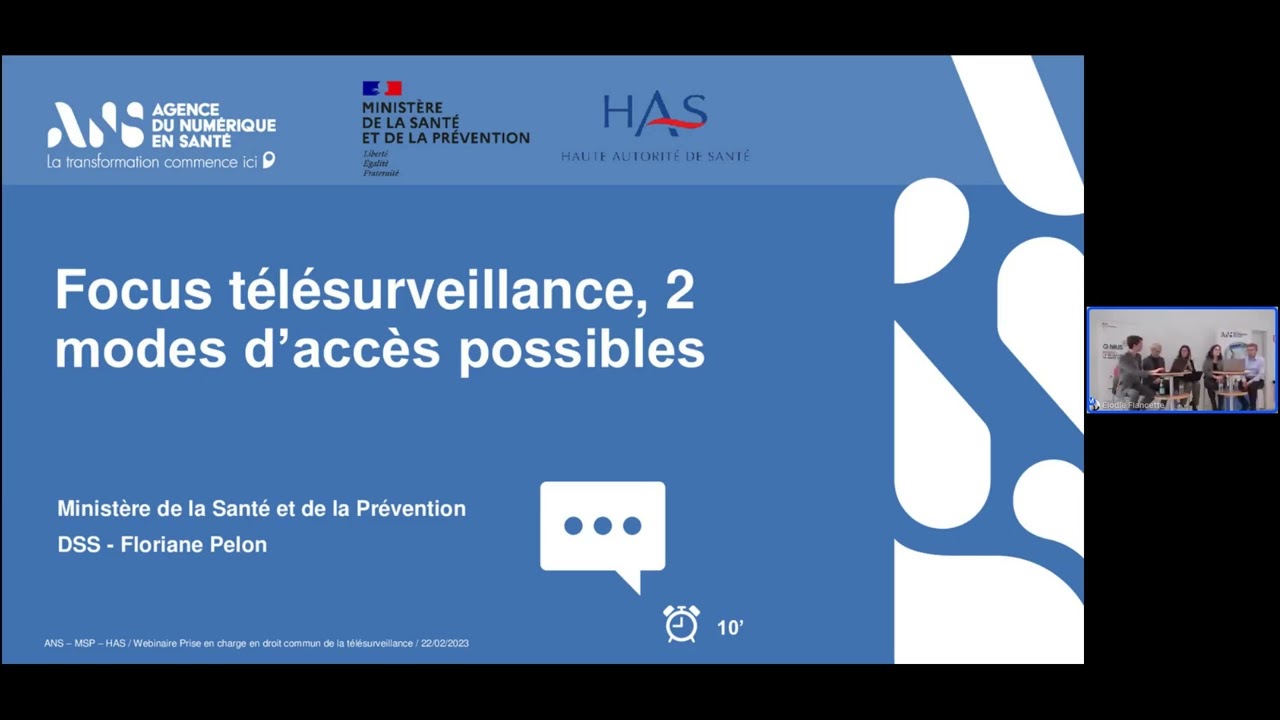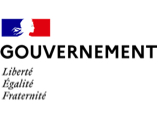Getting a refund for my remote monitoring solution
We guide you through the steps to take, the players to contact, the documentation to consult, to enable you to succeed in getting your remote monitoring solution reimbursed.
Would you like to?
Before you start work: are you eligible for a refund?
Two types of refund registration are possible
Webinar
What you need to do to be ready for July 1, 2023
In this video, the Ministry of Health and Prevention together with the Haute Autorité de Santé and the Agence du Numérique en Santé describe the broad outlines of this new reimbursement method.

France will become one of the first countries in the European Union to reimburse remote medical monitoring solutions that provide a clinical benefit or improve the organisation of care under its national health insurance system.
Remote monitoring is a type of patient management that allows a healthcare professional who is not present at the patient's location to interpret medical data collected there through the use of a digital medical device (DMD).
The ETAPES program (Experiments de Télémédecine pour l'Amélioration des Parcours en Santé) encourages and financially supports the deployment of remote monitoring projects throughout France. Currently, the experiment covers fives pathologies: Heart failure, renal failure, respiratory failure, diabetes and implantable cardiac prostheses. Remote monitoring can be set up for any patient whose care requires a period of medical follow-up. It is particularly suitable for people at risk of hospitalisation or complications from their illness (chronic pathologies, hospital discharge, etc.). This telemedicine procedure can improve the management and monitoring of the disease and the patients’ quality of life by preventing these complications. It also strengthens data collection and the coordination of healthcare professionals around their patients.
Like any medical activity, remote monitoring must be carried out under conditions that guarantee the quality and safety of the patient’s care. The entry into force of the new standard reimbursement framework requires that companies which operate digital remote monitoring medical devices comply with the security and interoperability obligations set out by the Agence du Numérique en Santé. They are also required to obtain a certificate of compliance with the DMD interoperability and security standard.
The two decrees provided for in Article 36 of the Social Security Financing Act for 2022 set the rules linking the remuneration of types of remote medical care by health professionals to the types of digital device used.
The first order sets out the conditions for assessment and how to qualify for reimbursement. In practice, any activity may be eligible for inclusion on the list, regardless of the diseases treated, as long as "its benefit is greater than that of conventional medical monitoring or if it is equivalent to or greater than that of a remote monitoring activity that is already on the list," the decree states. Brand-name solutions will be evaluated by the CNEDiMTS, a specialised commission of the Haute Autorité de Santé (HAS). Players who wish to register their solutions as generics will need to have their compliance with the specifications verified by the ANS.
This new reimbursement method is in addition to the advance payment system for certain digital medical devices and certain remote medical monitoring activities. It will be launched in the first half of 2023. The amounts of reimbursement by the Health Insurance Fund are set by order of the Ministers of Social Security and Health.
The second decree mentions the implementation of declarations of remote monitoring activities by medical teams to their ARS (regional health agency).
Operators will find many useful services on G_NIUS to guide them through the process:
In particular, the specific guide on remote monitoring will explain what the reimbursement of these medical activities is, the differences between generics and brand names, whether the operator's device is eligible for reimbursement, and will identify all the steps that must be taken with the ANS, the HAS or the Minister of Health to get reimbursed for that solution. The two step-by-step guides will make things easier for them.





